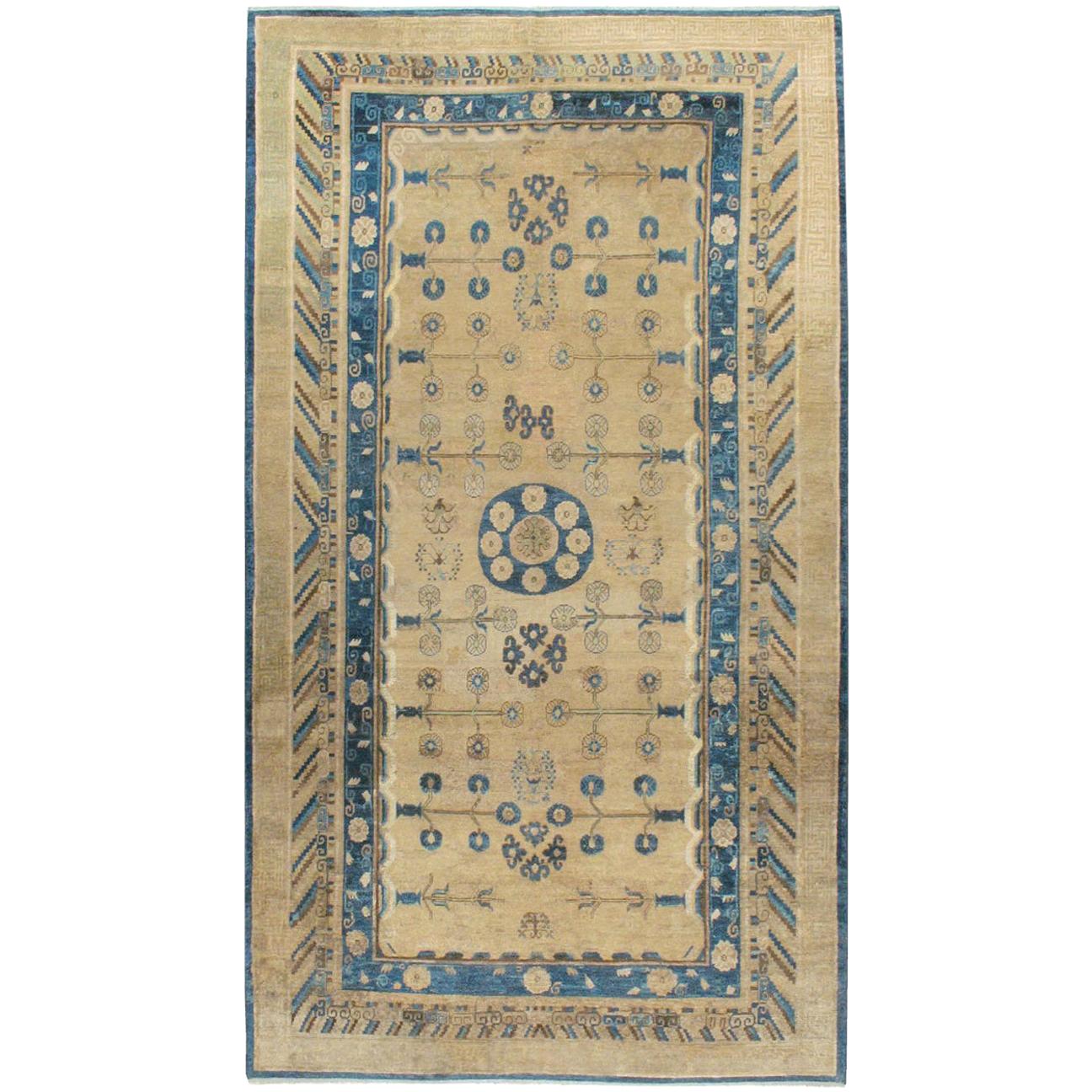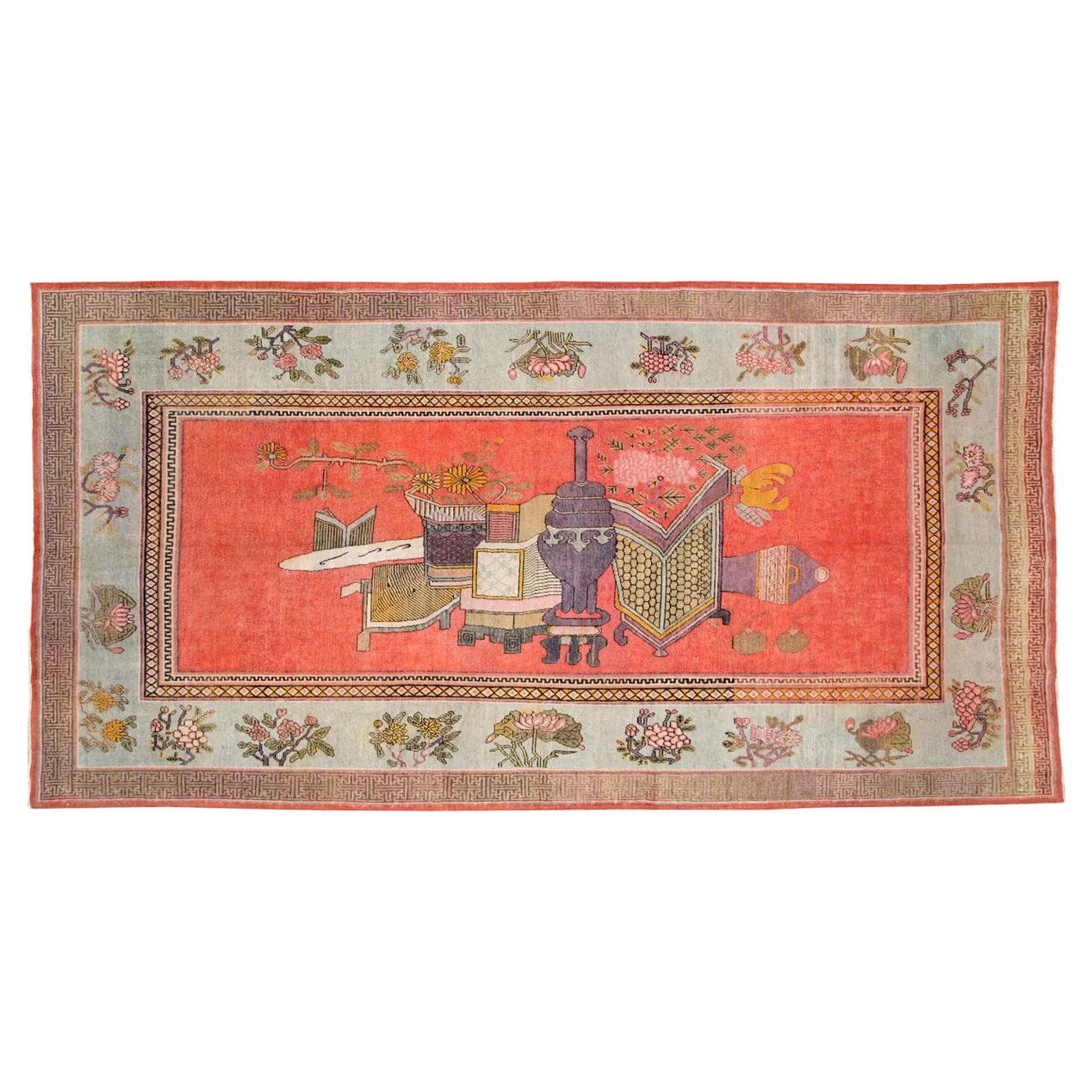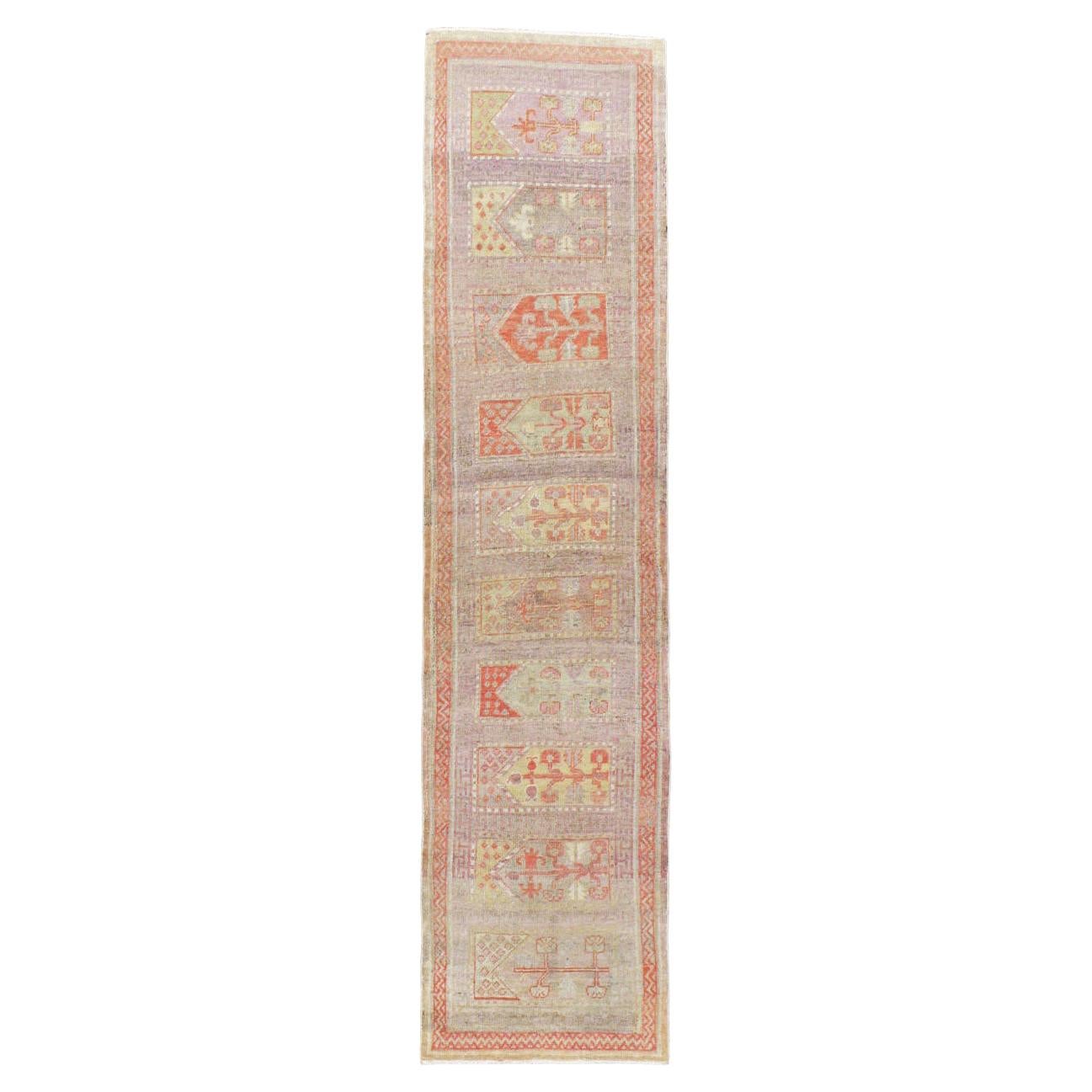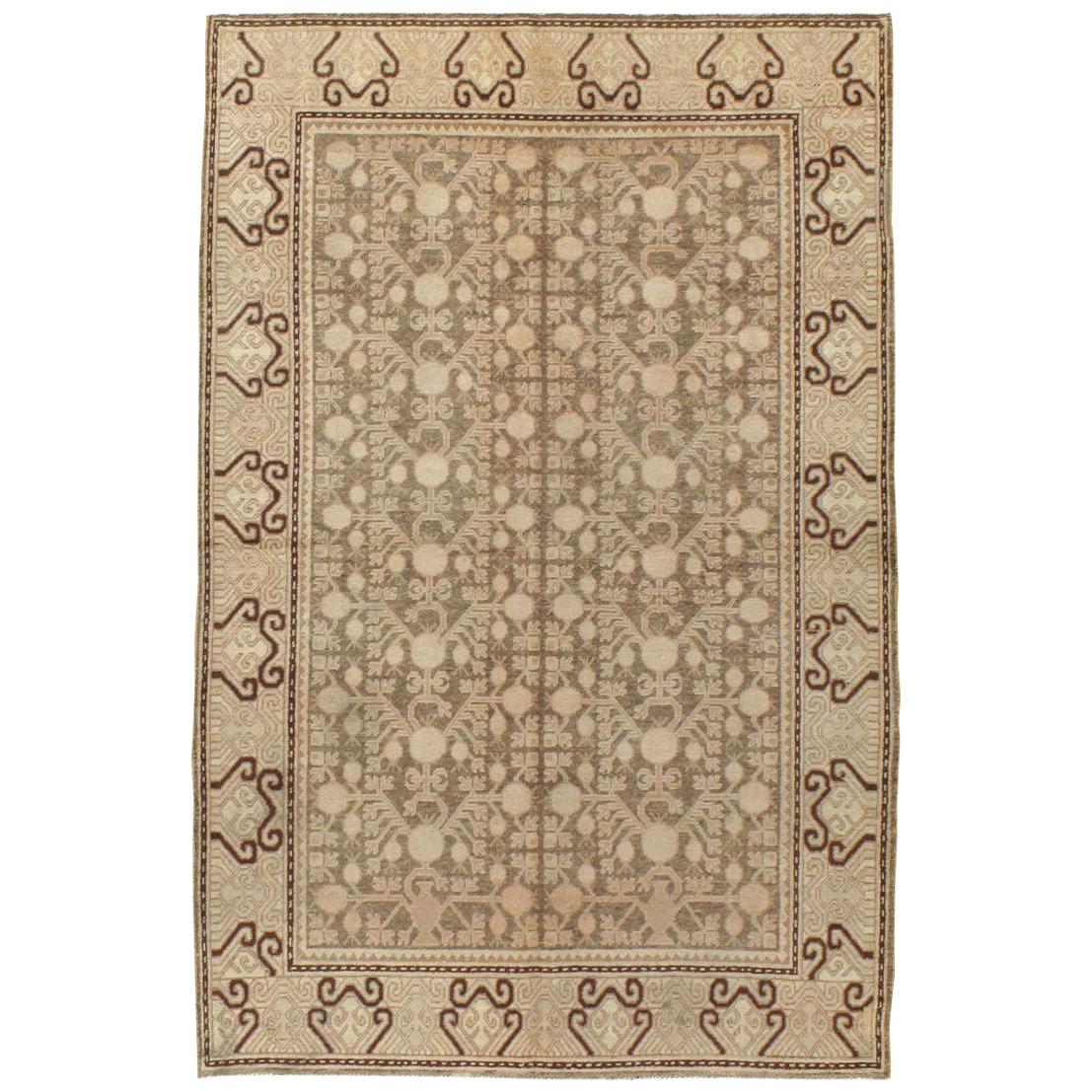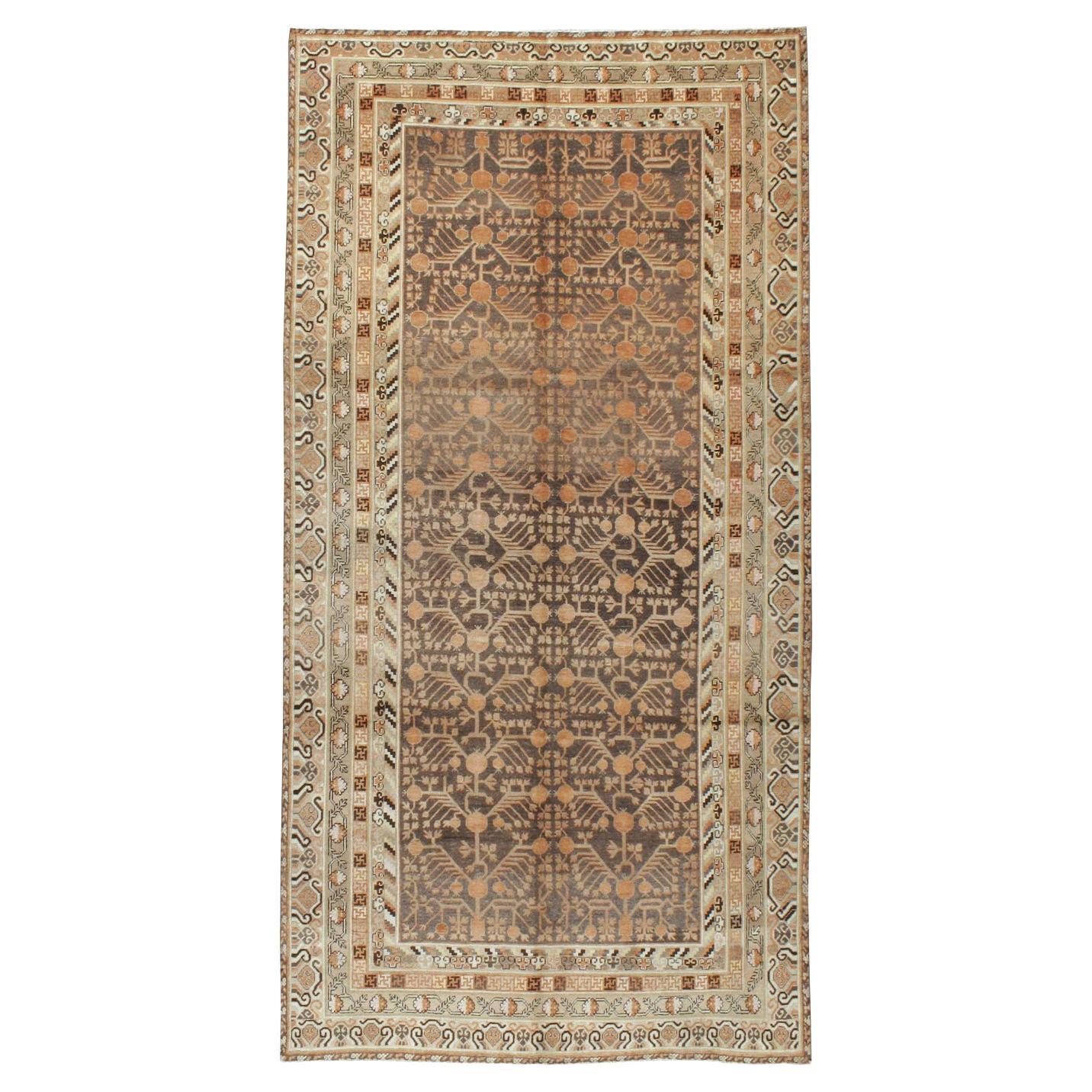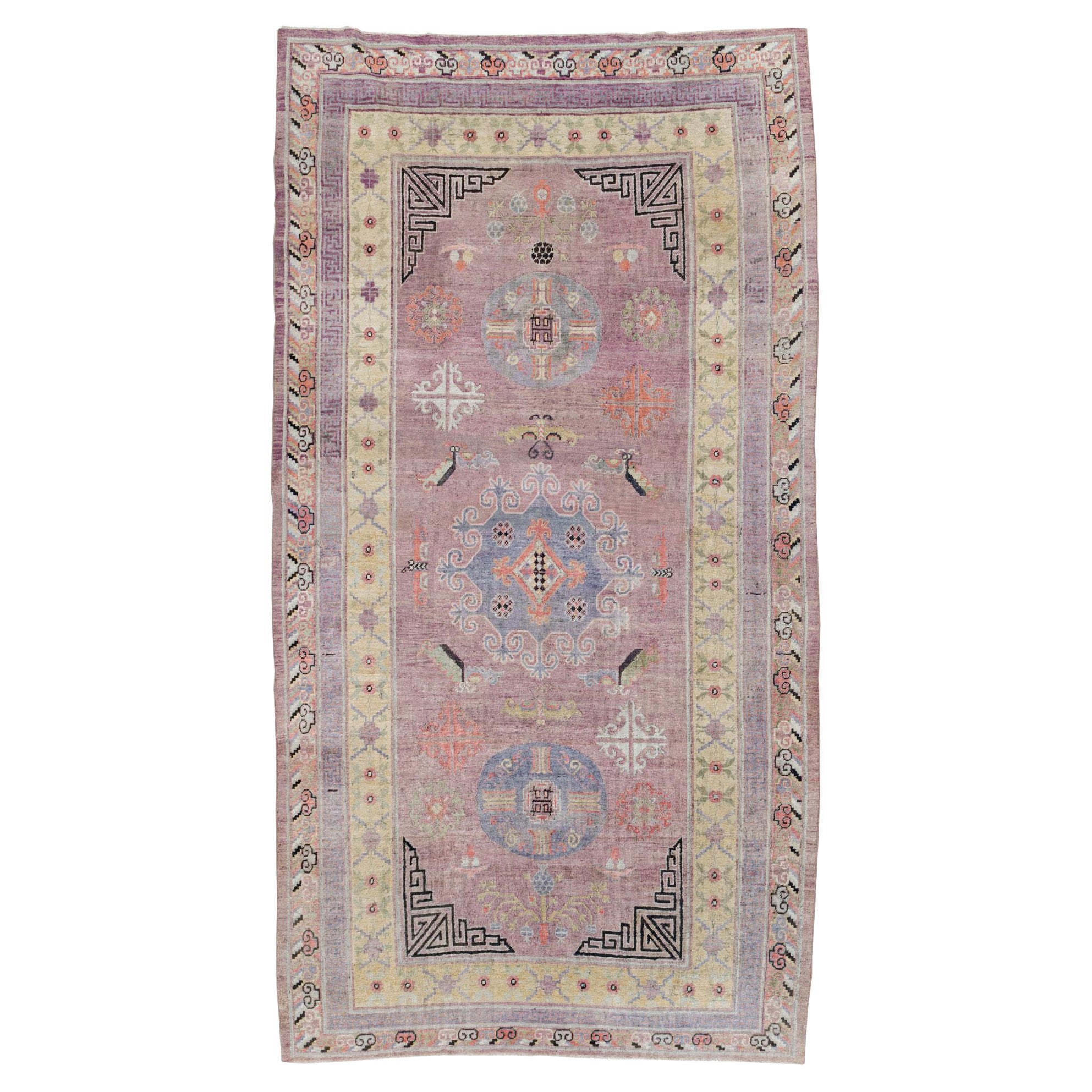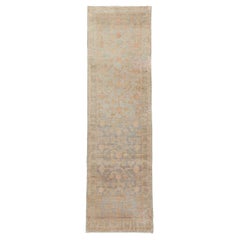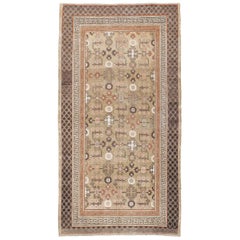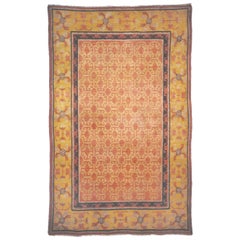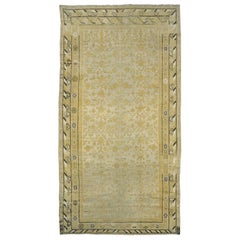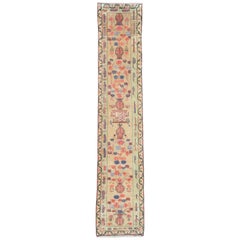
Mid-20th Century Handmade East Turkestan Khotan Runner
View Similar Items
Want more images or videos?
Request additional images or videos from the seller
1 of 11
Mid-20th Century Handmade East Turkestan Khotan Runner
About the Item
About the Seller
5.0
Platinum Seller
These expertly vetted sellers are 1stDibs' most experienced sellers and are rated highest by our customers.
Established in 1989
1stDibs seller since 2009
562 sales on 1stDibs
Typical response time: 1 hour
More From This SellerView All
- Early 20th Century Handmade East Turkestan Khotan Gallery Accent RugLocated in New York, NYAn antique East Turkestan Khotan accent rug in gallery format handmade during the early 20th century. Measures: 5' 2" x 9' 2".Category
Early 20th Century East Turkestani Rustic Chinese and East Asian Rugs
MaterialsWool
- Early 20th Century Handmade East Turkestan Pomegranate Khotan RunnerLocated in New York, NYAn antique East Turkestan Khotan rug in runner format with a pomegranate design handmade during the mid-20th century. Measures: 2' 2" x 7' 6" Central Asian Rugs & Carpets: Central Asia is a vast area stretching from Northeastern Persia to western China, and from northern Afghanistan to the southern edge of Russia. The carpets can be usefully divided into three groups: the nomadic Turkmen rugs of Turkmenistan, northern Afghanistan, and northeastern Persia; the non-Turkmen tribal pieces from Kazakhstan, Uzbekistan, and Kirghizstan; and the urban creations of Khotan, Yarkand, and Kashgar, oasis cities of Western China (Xinjiang Province). Commercially, the most important group is from Khotan, the easternmost of the Chinese Turkestan cities. The craft of rug weaving is primarily in the hands of Muslim Uighurs. Khotan carpets mix purely Central Asian design themes with Chinese elements. Native Khotan devices include pomegranate trees, upright flowers, round medallions, and yellow or red grounds. Chinese motives include triangular fretwork corners, swastika fretwork, and Yun-Tsao Tou (clouds and rain) diagonally striped polychrome borders. Cotton foundations, asymmetrical (Persian) knots, and medium weaves are standard. Some vintage Khotan are in horizontal, pictorial layouts with multiple various vases and plants. Saphs (multiple prayer niche panel carpets) are also a Khotan specialty. Others employ stepped and layered lozenge medallions, singly or in pairs. Still others, almost all antique, feature a stylized version of the allover Persian Herati design. Many of the oldest pieces employ brown wool wefts. Antique and vintage Khotans are almost always in the k’ang (double square) layout, conforming to the local household plans. Only relatively recently has the 6’ by 12’ or 7’ by 16’ format been replaced by the 9’ by 12’ size. As a result, an antique room size Khotan carpet is very uncommon. Reds are cinnamon, tomato and rust, never wine reds, crimson, or scarlet. Yarkand, farther west on the old Silk Road specializes in multi-medallion long carpets while Kashgar, farthest west and most under Persian influence, has traditionally knotted allover pattern pieces with finer weaves, often with silk piles, and enriched with medal thread, on cotton foundations. Extant Kashgars go back to the 17th century, but the carpet craft in Chinese Turkestan must be much older as fragments have been recovered from local tombs of the early C.E. period. Kashgars are the rarest of all East Turkestan rugs. Most available vintage East Turkestan carpets are interwar Khotans, many with pleasingly soft decorative palettes. The non-Turkmen nomads include the Kazakh, Kirghiz, Uzbek, and Karakalpak groups. Like the Turkmen, they were once all seasonally migratory, dwelling in round felt tents (yurts), but have been settled, at least partially, in the villages, and have taken up crafts and agriculture instead of sheep herding. As a result, carpet production has transitioned from domestic tent use to commercial sale, but the roots of long traditions are still evident. The Uzbeks weave...Category
Early 20th Century East Turkestani Modern Central Asian Rugs
MaterialsWool
- Rustic Early 20th Century Handmade East Turkestan Khotan Gallery Accent RugLocated in New York, NYAn antique East Turkestan Khotan accent rug in gallery format handmade during the early 20th century with a rustic and geometric design in brown and cream tones, and rust accents. ...Category
Early 20th Century East Turkestani Rustic Chinese and East Asian Rugs
MaterialsWool
- Early 20th Century Handmade East Turkestan Khotan Gallery Carpet, circa 1900Located in New York, NYAn antique East Turkestan Khotan gallery format carpet handmade during the turn of the 20th century. Measures: 7' 2" x 12' 10".Category
Early 20th Century East Turkestani Rustic Chinese and East Asian Rugs
MaterialsWool
- Early 20th Century Handmade East Turkestan Khotan Pictorial Vase Gallery CarpetLocated in New York, NYAn antique East Turkestan Khotan gallery carpet handmade during the early 20th century with a pictorial vase design. Measures: 6' 8" x 12' 10".Category
Early 20th Century East Turkestani Chinoiserie Chinese and East Asian Rugs
MaterialsWool
- Early 20th Century Handmade East Turkestan Saph Khotan RunnerLocated in New York, NYAn antique East Turkestan Saph Khotan rug in runner format handmade during the early 20th century. Measures: 2' 2" x 9' 3" Central Asian Rugs & Carpets: Central Asia is a vast area stretching from Northeastern Persia to western China, and from northern Afghanistan to the southern edge of Russia. The carpets can be usefully divided into three groups: the nomadic Turkmen rugs of Turkmenistan, northern Afghanistan, and northeastern Persia; the non-Turkmen tribal pieces from Kazakhstan, Uzbekistan, and Kirghizstan; and the urban creations of Khotan, Yarkand, and Kashgar, oasis cities of Western China (Xinjiang Province). Commercially, the most important group is from Khotan, the easternmost of the Chinese Turkestan cities. The craft of rug weaving is primarily in the hands of Muslim Uighurs. Khotan carpets mix purely Central Asian design themes with Chinese elements. Native Khotan devices include pomegranate trees, upright flowers, round medallions, and yellow or red grounds. Chinese motives include triangular fretwork corners, swastika fretwork, and Yun-Tsao Tou (clouds and rain) diagonally striped polychrome borders. Cotton foundations, asymmetrical (Persian) knots, and medium weaves are standard. Some vintage Khotan are in horizontal, pictorial layouts with multiple various vases and plants. Saphs (multiple prayer niche panel carpets) are also a Khotan specialty. Others employ stepped and layered lozenge medallions, singly or in pairs. Still others, almost all antique, feature a stylized version of the allover Persian Herati design. Many of the oldest pieces employ brown wool wefts. Antique and vintage Khotans are almost always in the k’ang (double square) layout, conforming to the local household plans. Only relatively recently has the 6’ by 12’ or 7’ by 16’ format been replaced by the 9’ by 12’ size. As a result, an antique room size Khotan carpet is very uncommon. Reds are cinnamon, tomato and rust, never wine reds, crimson, or scarlet. Yarkand, farther west on the old Silk Road specializes in multi-medallion long carpets while Kashgar, farthest west and most under Persian influence, has traditionally knotted allover pattern pieces with finer weaves, often with silk piles, and enriched with medal thread, on cotton foundations. Extant Kashgars go back to the 17th century, but the carpet craft in Chinese Turkestan must be much older as fragments have been recovered from local tombs of the early C.E. period. Kashgars are the rarest of all East Turkestan rugs. Most available vintage East Turkestan carpets are interwar Khotans, many with pleasingly soft decorative palettes. The non-Turkmen nomads include the Kazakh, Kirghiz, Uzbek, and Karakalpak groups. Like the Turkmen, they were once all seasonally migratory, dwelling in round felt tents (yurts), but have been settled, at least partially, in the villages, and have taken up crafts and agriculture instead of sheep herding. As a result, carpet production has transitioned from domestic tent use to commercial sale, but the roots of long traditions are still evident. The Uzbeks weave...Category
Early 20th Century East Turkestani Folk Art Central Asian Rugs
MaterialsWool
You May Also Like
- Early 20th Century East Turkestan Khotan RugLocated in New York, NYEast Turkestan ca. 1900 9'1" x 4'6" (277 x 137 cm) handwovenCategory
Early 20th Century East Turkestani Khotan Chinese and East Asian Rugs
MaterialsWool
- Early 20th Century East Turkestan Khotan RugLocated in New York, NYEast Turkestan, circa 1900 Measures: 6'1" x 3'10" (185 x 117 cm) Handwoven.Category
Early 20th Century East Turkestani Khotan Chinese and East Asian Rugs
MaterialsWool
- Early 20th Century East Turkestan Khotan RugLocated in New York, NYEast Turkestan ca. 1900 13'4" x 7'0" (406 x 213 cm) HandwovenCategory
Early 20th Century East Turkestani Tibetan Chinese and East Asian Rugs
MaterialsWool
- Stunning Early 20th Century Khotan Rug from East TurkestanLocated in San Francisco, CASituated along the ancient Silk Roads running between China and Central Asia, Khotan is an oasis city in the region of East Turkestan in what is now Xinjiang Uyghur Autonomous region in northwest China. Reflecting the geography in which it was woven, this piece blends elements of Central Asian and Chinese design. A central medallion is drawn in the center of an abstract field which actively combines a host of well-spaced floating motifs. Butterflies, shrubs and smaller floral forms are drawn spaciously spanning the area surrounding the medallion and in between two planted pots on either end of the field. Two borders derived from Chinese traditions frame the composition. With their pleasing light palette and spacious drawing, Khotan weavings...Category
Early 20th Century Central Asian Rugs
MaterialsCotton, Wool
- Exquisite 19th Century Antique East Turkestan Khotan RugLocated in New York, NYEarly 20th century colorful antique Khotan gallery rug. The field is a bone color, denim blue, rust accents are dominant. Measures: 5'8" x 12'11".Category
Early 20th Century Turkmen Khotan Central Asian Rugs
MaterialsWool
- Late 19th Century Khotan Rug from East TurkestanLocated in West Hollywood, CAThis antique Khotan rug has a golden-yellow field with a central pomegranate shaped lozenge of shaded purple surrounded by delicate flower-heads and floral sprays with open angular s...Category
Antique Late 19th Century East Turkestani Khotan Chinese and East Asian ...
MaterialsWool



